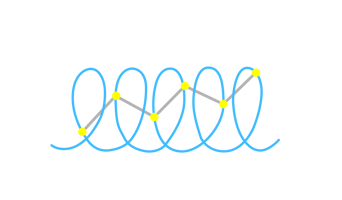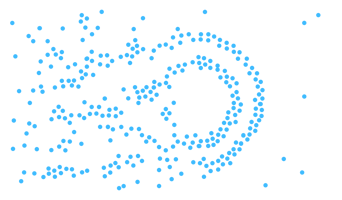Old-style vision and mission statements that follow an unresponsive top-down logic will not lead to a shared company purpose. The main reason is that a shared purpose cannot be a fossilized artifact or a static text. A purpose, in contrast, is a constant process that emerges from the interactions and sensemaking between an organization’s members. Higher degrees of decentralized authority foster the processes that lead to a meaningful purpose.
There is one key common denominator that connects recent contributions on purposeful and purpose-driven organizations and sets the current debate apart from earlier discussions of business vision, mission, and company values. This common thread is an emphasis on individual meaning and sensemaking and, accordingly, the broad and dynamic basis for this purpose in the organization.
Old-style vision and mission statements follow an unresponsive top-down logic
An old-style vision and mission would typically be developed by a firm’s senior management (e.g. following a half-day workshop during an executive board’s strategy retreat), and then “cascaded” down the organization. This would often happen with limited (or no) feedback loops between what was decreed from the top and what people in the organization made of it. So, obviously, the vision and mission would not be responsive to people’s sensemaking, which could result in them becoming hollow platitudes that nobody cared about. But that wouldn’t even be the worst outcome! In worst case scenarios, people would find the vision, mission, and “official” values at odds with their lived experience, giving rise to cynicism and disengagement within an organization. In fact, this possible outcome is the reason some senior executives eschewed the whole process altogether.
A purpose is thus not a fossilized artifact or a static text, it is a constant process that emerges from the interactions between an organization’s members.
A powerful purpose, in contrast, “focuses employees on a goal beyond profit maximization and resonates in a meaningful and personal way within the company”. A purpose is thus not (only) a fossilized artifact or a static text, it is a constant process that emerges from the interactions between an organization’s members.
Sometimes this is described as if the purpose always existed, for example in the words of Robert Quinn and Anjan V. Thakor: “But you do not invent a higher purpose; it already exists. You can discover it through empathy – by feeling and understanding the deepest common needs of your workforce.”
If this sounds a little esoteric, the important point is that the purpose emerges from interaction – and this interaction can, and must, be facilitated and led. In contrast to the idea that there is a pre-existing purpose, we would argue that the meaning is actually a product of this interaction. It is a product of this interaction in a way that would not result from a simple one-way communication of a vision and a mission statement.
Higher degrees of decentralized authority foster the processes that lead to a meaningful purpose
The interactions necessary to develop a meaningful purpose require a broad leadership effort across the organization.
This effort can be executed by a strong middle management layer assigned to formal team leadership roles. In fact, it has been shown that the business benefits of a company purpose depend on “middle managers and professional workers [who] seem to be the key players in driving [the positive] relationship” between purpose and profit. Management clarity is another condition that allows purpose to drive profit (instead of reducing it), in the sense of leaders making their expectations clear and sharing a clear vision of where the organization is going and how it can get there (see the summary of study by Serafaim and Gartenberg based on Great Place to Work survey data).
The close link between the purpose debate and novel forms of organizing, however, seems to suggest that a high degree of decentralized authority enables a distributed leadership effort, which fosters a broadly supported purpose. People with the authority to make decisions will also develop ways to attach meaning to those decisions and the actions resulting from them. If there is a context that genuinely invites them to make sense of those decisions in a meaningful, agency-based way that contributes to a bigger picture, then you have a mechanism to integrate the purpose debate across the whole organization.
If, on the other hand, people are merely following orders, are supervised, and are simultaneously asked to recite a vision, they are, at best, disengaged and, at worst, cynical.
See our purpose and goals trigger questions tool for formal or actual team leaders, and the Agile Organizing Kit on innovative approaches to managing and leading organizations.



